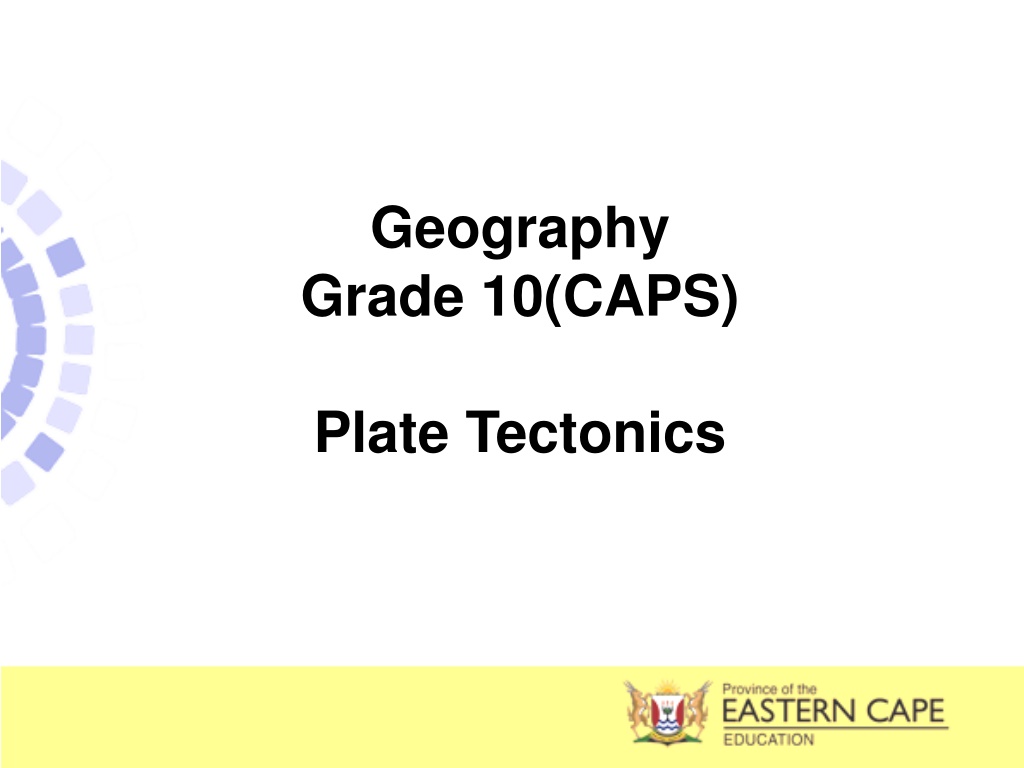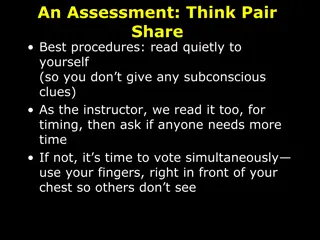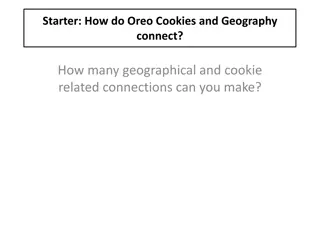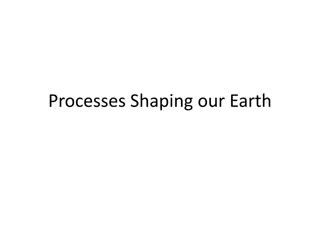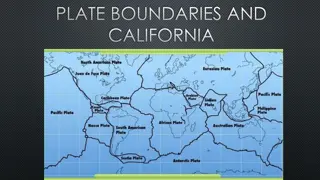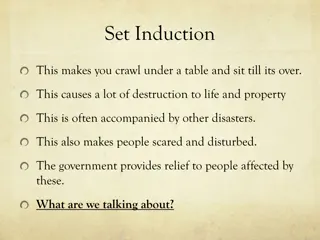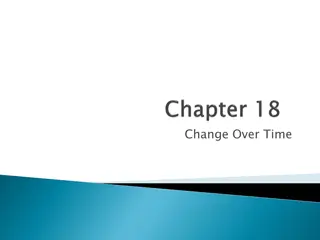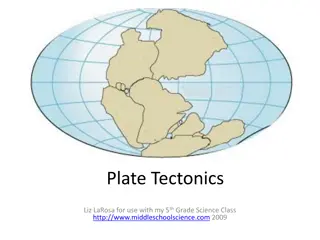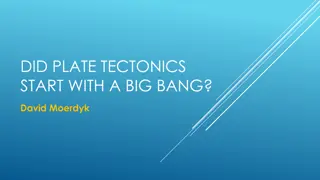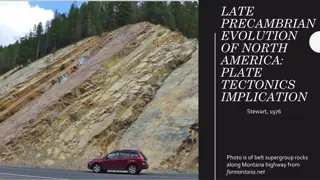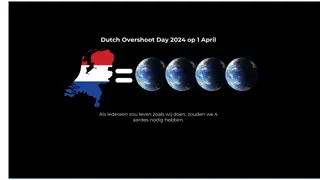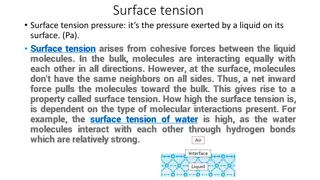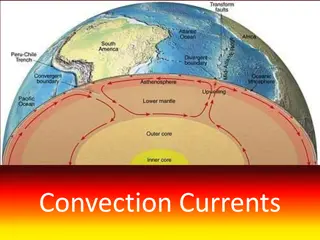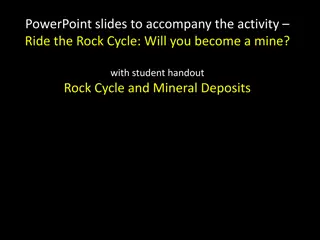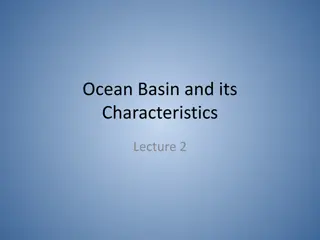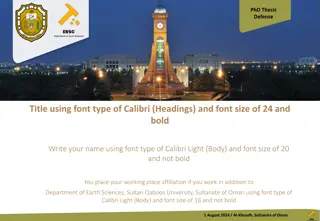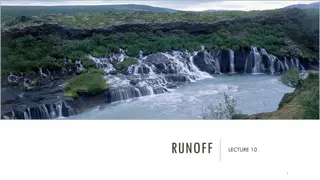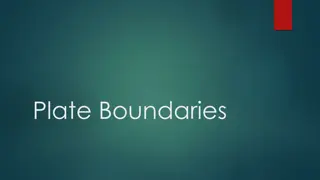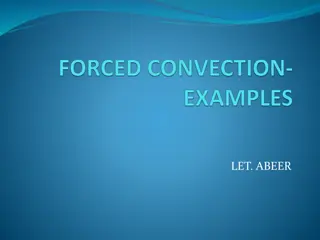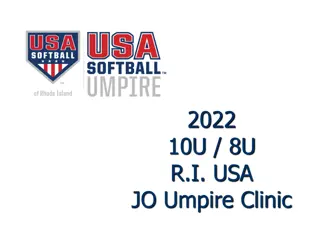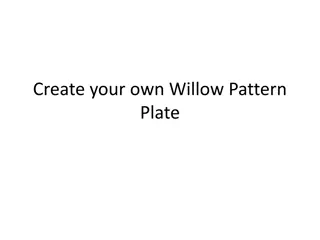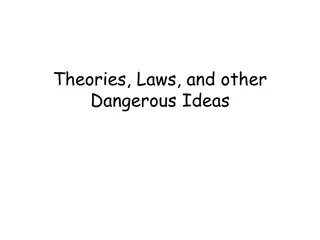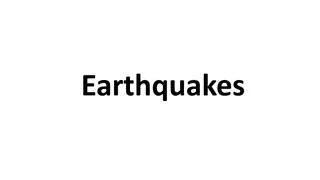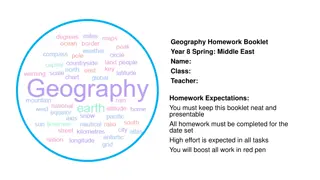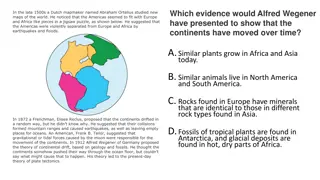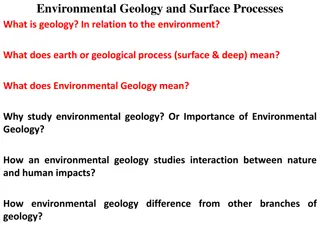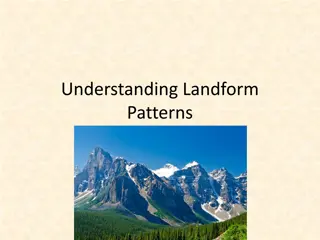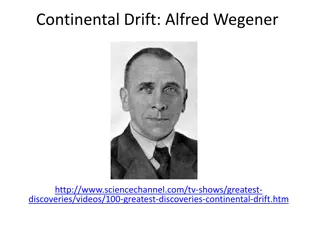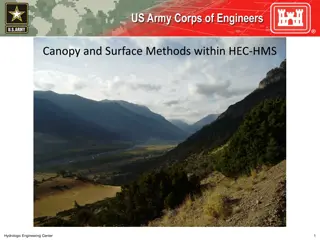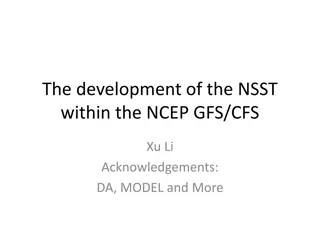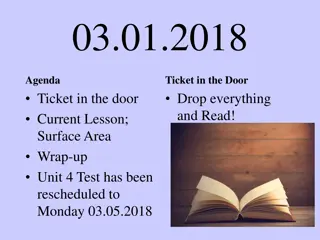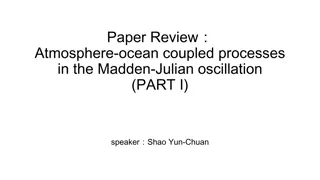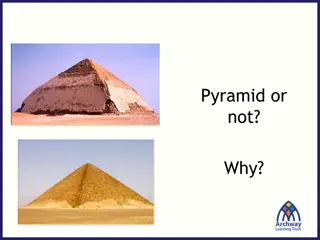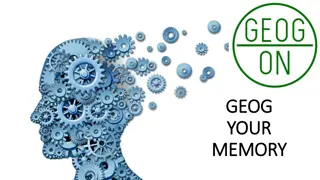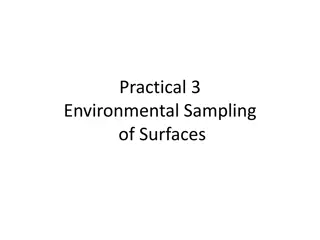Understanding Plate Tectonics and Earth's Surface Features
The study of plate tectonics reveals how the Earth's crust is divided into tectonic plates, leading to various types of plate boundaries like divergent, convergent, and transform. These movements result in earthquakes, volcanic eruptions, and landform changes such as folding and faulting. Different types of folds and faults, including normal, reverse, and transform, play a crucial role in shaping the Earth's surface. Exploring these geological processes helps us understand earthquakes, volcanoes, and the dynamic nature of our planet.
Uploaded on Sep 22, 2024 | 0 Views
Download Presentation

Please find below an Image/Link to download the presentation.
The content on the website is provided AS IS for your information and personal use only. It may not be sold, licensed, or shared on other websites without obtaining consent from the author. Download presentation by click this link. If you encounter any issues during the download, it is possible that the publisher has removed the file from their server.
E N D
Presentation Transcript
Geography Grade 10(CAPS) Plate Tectonics
Presentation layout Presentation layout Plate tectonics Types of Plate boundaries Land forms associated with different plate boundaries
Tectonic plate- a section of the Earths crust which can move on the mantle. Divergent boundaries- plates move away from each other. New crust is created from erupting volcanoes at divergent plate boundaries. Convergent boundaries- plates come together. One plate is forced under another into the mantle. The plate melts causing earthquakes and volcanic eruptions.
Transform/transverse/passive boundaries- plates grind past each other and movement is associated with earthquakes. Plate boundary- the edge of a tectonic plate. Plate tectonics is a theory that suggests the crust of the Earth is divided into 7 giant pieces and 12 small ones called tectonic plates.
Plate boundaries Plate boundaries
Folding and Faulting Folding and Faulting Rocks change shape when they are compressed from the sides. A fold is a bend in a rock that is caused by compressional forces. A fault is a break within the crust. Faulting can be caused by forces of compression or tension.
Types of Folds Types of Folds
Faulting Faulting A fault is a crack which forms in rocks as a result of continuous tension and compression. Faulting is caused by forces of compression or tension. Fault line is a line along the surface of the Earth where a fault occurs.
Cont... Cont... TYPES OF FAULTS NORMAL FAULT- This is caused by forces of tension. REVERSE FAULT- Is caused by forces of compression. TRANSFORM/TEAR FAULT- Tearing forces cause rocks to move past each other laterally.
Earthquakes and Volcanoes Earthquakes and Volcanoes An earthquake refers to an intense tremblingof the earth s crust caused by vibrations. Volcanism refers to the movement of molten material from one part of the crust to another.
Earthquakes Earthquakes
Volcanoes Volcanoes
Causes of earthquakes and Volcanoes Volcanoes occur when magma comes out on to Earth s surface a lava. This is known as extrusive volcanism. Most volcanoes occur on the tectonic plate boundaries, at the subduction zone where one plate is sliding beneath another plate. Nuclear explosions Impact of meteors Faulting, folding Landslide Mine blasts
Impact of Earthquakes and Volcanoes Minerals are found in volcanic rock. e.g. Copper and diamond. Volcanic ash fertilizes the soil. Volcanoes attract tourists. Natural hot springs are Ash buries buildings and covers fields. Earthquakes can cause building and bridges to collapse. Tsunami can carry boats, cars, people and houses with them. Large areas may be submerged by water.
THANK YOU THANK YOU
